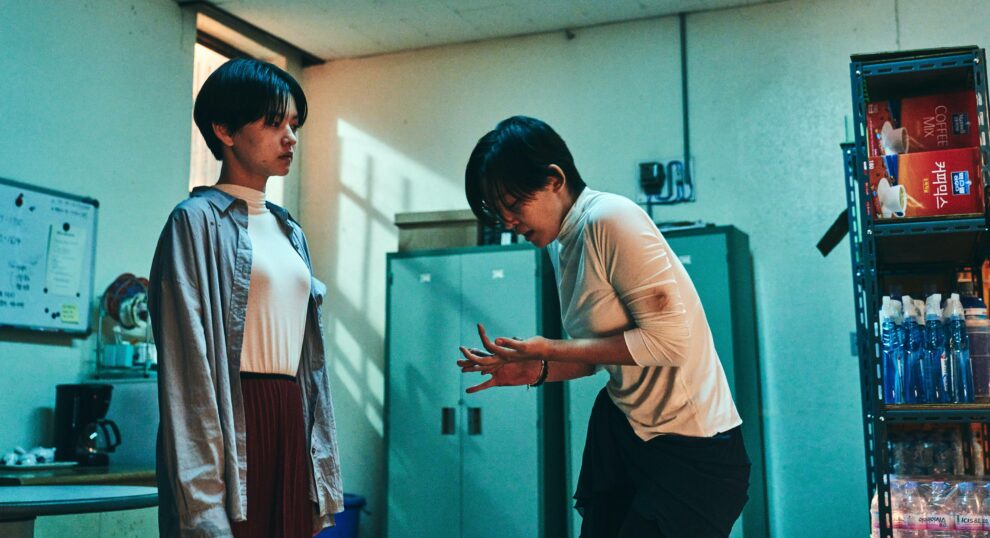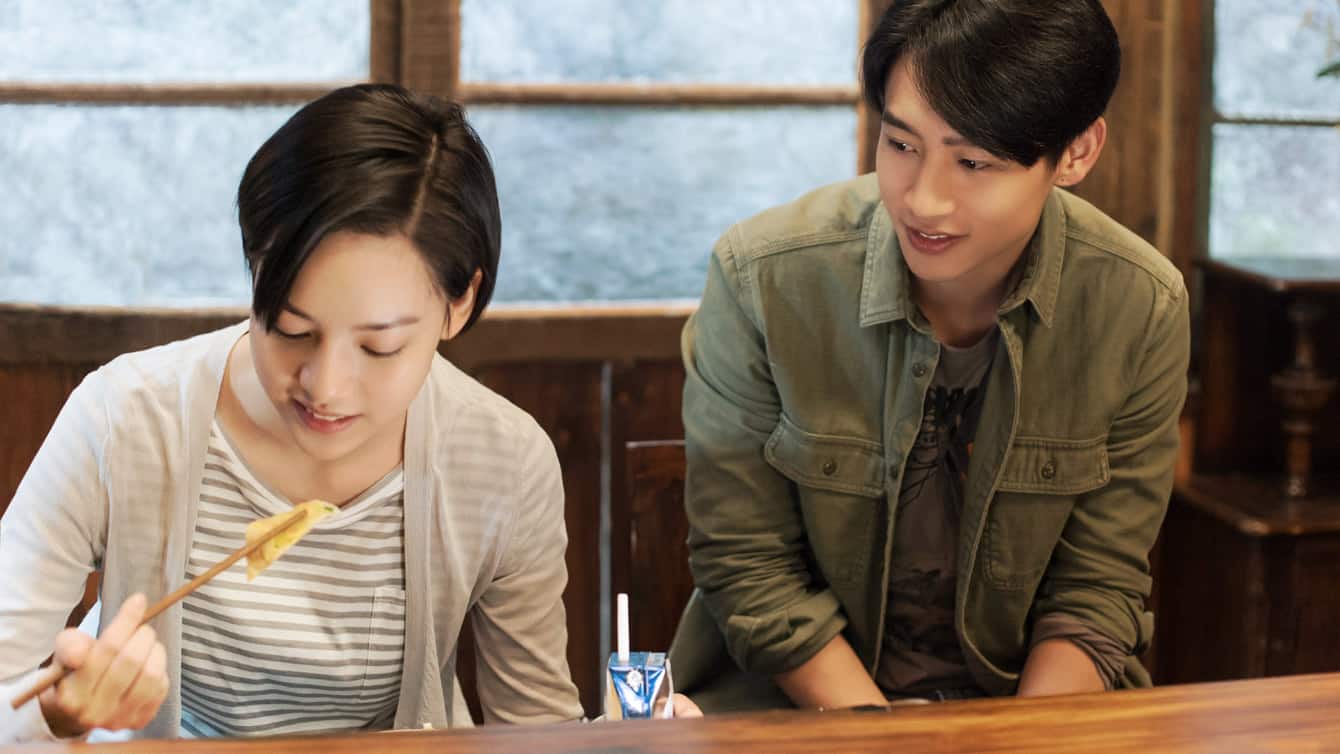One of the latest and most interesting slight trends in Korean cinema is combining genre basis with arthouse aesthetics, particular in sci-fi and horror movies, with titles like “Seire” and “Fallen” being among the most prominent samples. Han Dong-seok also implements a similar approach in “The Sin”, which begins as a film about an experimental film, before it becomes a full-throttle horror, retaining though, the arthouse aesthetic essentially throughout.
The Sin is available from KT Alpha
Si-young has been chosen to play the lead in an experimental art film centered around her dance major. As soon as she arrives in the remote building that is to serve as the main set, a number of unpleasant surprises fall on her (pun intended). As soon as she reaches a building, she witnesses a body falling from the roof next to her. Although it turns out it was a test doll for the shooting, the young woman is still shocked. Even more so, when she realizes that she is not the only protagonist, but her college friend, Chae-yoon, also has a protagonist role, in a relationship that is revealed to include some tension from the past. Furthermore, both her and the rest of the crew soon realize that the director has no clue of what he is doing, while even more shockingly, when a production team member suddenly falls from the roof, their seemingly lifeless body begins to move and come to life. While everyone is trying to survive, a rather weird group of policemen eventually appears, followed by yet another group.
Han Dong-seok directs a very unusual movie, which thrives, though, on a number of levels. For example, the way horror creeps in a narrative that looks like a drama in the beginning is exceptional, in a style that occasionally reminds of Miike's “Audition” particularly in the way horrific scenes suddenly and briefly appear on screen. The backstory of the two protagonists, which obviously includes some trauma, is also well-implemented to create an atmosphere of disorientation and a sense that something is very wrong. The first stabbing, and the appearance of zombies cement this approach, while as time passes, it is revealed that this is just one level of the many in the story, while a ritualistic/shamanic aspect that is eventually included also adds to the overall sense of horror and mystery here. As more and more twists come to the fore, the supernatural and violence takes over, but Han retains the sense of drama with each new character and revelation, in probably the best trait of both the script and his direction.
Also of note are the comments that are presented through the story. The one about how the movie industry works, and particularly the “surprises” Si-young experiences and what happens when the cast and crew realize that the director does not know what he is doing are actually very pointed. As the story progresses, guilt, revenge, and the concept of letting go, in its occasional impossibility are also highlighted, while the finale makes a remark on how the actions (or inaction) of parents essentially shape their children.
Han Dong-seok also includes iconoclastic elements in his narrative, with the hooded individuals and the scene with the projector screening on the face of the protagonist being the main “representatives” of an aspect that could be interpreted in a number of ways. In general, the film entails a plethora of elements that could be subject of further and thorough analysis, but as the shock factor is based on the twists appearing throughout, I will refrain from commenting.
Check also this article
The iconoclastic elements, though, owe a lot to the excellent cinematography here, with the camera capturing all the different horrific and action aspects of the movie excellently, taking full advantage of the abandoned building setting. The ritualistic elements in particular are excellently portrayed, frequently with the aforementioned Miike-like approach that also showcases the excellent job done in the editing.
Kim Yoon-hye as Si-young and Song Yi-jae as Chae-yoon give excellent performances, presenting their many transformations with realism and artistry, while their chemistry is one of the best traits of the movie. The aforementioned iconoclasm is also showcased through the fact that their overall appearance (clothes, haircut) is almost identical, in an element that also adds to the mystery that permeates the atmosphere of the movie.
The truth is that in terms of story, Ha loses his sense of measure somewhat, as too many elements are included in the script which make the whole thing convoluted and far-fetched by its finale. The narrative approach, however, particularly the combination of horror, drama and arthouse, as much as the way the movie was shot are definitely enough to move beyond any shortcomings, with the whole thing working quite well throughout, additionally boasting a very appealing originality.
















